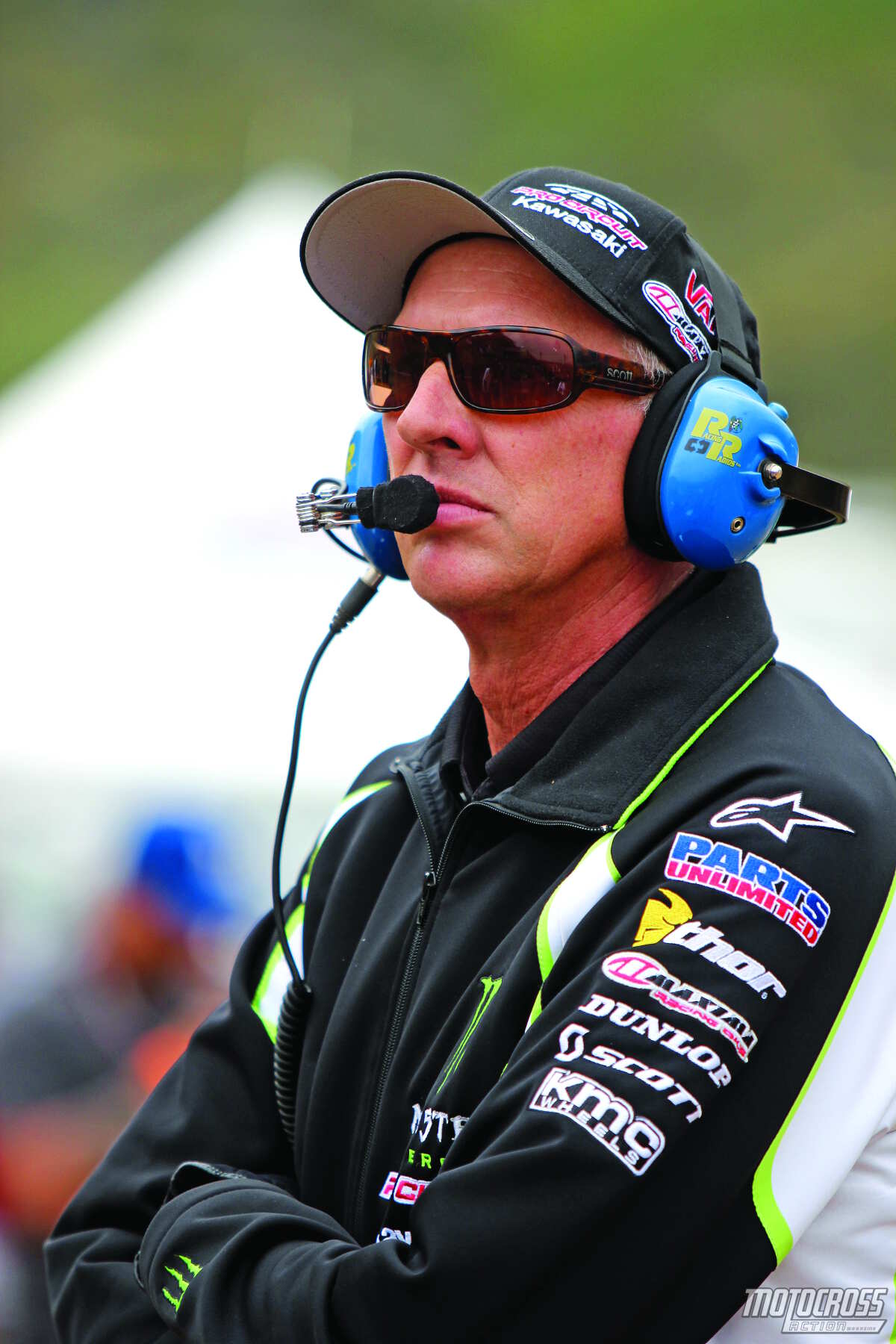BARE BONES: SAND! LOVE IT OR DEAL WITH IT
By Bones Bacon
Personally, I hated riding in sand. You have to stand up all the time and constantly work the bike. From the Indian Dunes’ International track to Santa Maria’s Spillway Park to Marysville’s E-Street track, I didn’t like racing in sand. But, I had to deal with it. The funny thing is that the more I prepared for the sand, the more I got my mind wrapped around it and the harder I gritted my teeth, the better I did. For a guy who hated sand, some of my better races were on sand tracks.
Bike setup varies depending on the type of sand, but the basic guidelines remain consistent. California sand tracks require only moderate adjustments, normally done with the clickers; however, Florida and Dutch sand tracks make California sand tracks look like hardpack. Riding on beach-style sand tracks requires more drastic suspension changes to make the bike comfortable.
When I went to the Motocross des Nations at Lommel in 2012, the whoops were 4-feet deep and the sand looked bottomless. Just imagine the suspension changes that Team USA had to make, not only to the suspension, but to the chassis also.
THE ONE THING YOU DON’T WANT IN SAND IS FOR THE FRONT END TO SETTLE DOWN INTO ITS STROKE.
Let’s get specific. The Southwick, Massachusetts, sand track is a medium layer of sand over a hard base. The first thing we do to our race team bikes at Southwick is to slide the forks down in the triple clamps anywhere from 5mm to 10mm more than normal. This will slacken the head angle, slow the steering down, increase stability on the straights and allow the bike to flow through the corners. The one thing you don’t want in sand is for the front end to settle down into its stroke, because there isn’t any tacky dirt for the front tire to bite on. Instead, you need to get the bike to float through the corners while you stay relaxed. If it feels like the front end still wants to tuck after adjusting the fork height, then try loosening the fork rebound adjuster a couple of clicks and adding more compression damping. The goal is to have the front ride higher in the stroke than normal so the bike can find its own way around the track without feeling twitchy or nervous.
At Southwick, I don’t usually make too many adjustments to the shock. But depending on how severe the sand bumps get at your track, you may need to. If the bumps get big and deep, like mini G-outs, and the back of the bike is dropping into them, then you’ll have to address that before it gets you into trouble. In these conditions you want to stiffen the compression (normally high speed) and slow the rebound down a little. One caveat: you must be careful not to go too far when slowing the rebound down on the shock. If the rebound is too slow, the shock will not have time to recover from bump to bump. This is called packing. Packing at a sand track can result with the back of your bike kicking out and passing the front. Not good. On the other hand, the more bottomless the sand, the more you have to go in this direction.
Suspension and chassis changes aside, you must be in the right state of mind to do well in the sand. We had team riders like Tyla Rattray who were excited about racing at a sand track. His positive approach gave him a mental advantage. Blake Baggett was a California boy. He had no sand experience, so he approached Southwick with some trepidation. Luckily, his bike was well setup. He prepared by riding in the sand before the race; he listened to the advice of sand specialists and went into the weekend with a great attitude. The result? He won.







Comments are closed.